Starting an Indie Pattern Company Pt. 2
Ok ladies and gents, get ready to roll up your sleeves and dig in. We’re getting deep into the seething underbelly of this pattern drafting thing. First we’re gonna get that sucker on the computer then we’re gonna draw up some charts and graphs and after that we’ll gonna slice ‘er open and check out all those crazy mathematical insides. It’s gonna get messy up in here!
Vague references to hog butchery aside, this is the tricky bit in the pattern company process and requires some attention. If you need to catch up be sure to read Pt 1 on the How I Started and Indie Pattern Company!
I’m assuming most of you know some basics about pattern making and terminology. You may or may not know about the software I’m using and there’s a chance you’ll need to remember your high school geometry class. However, if there’s anything you don’t fully understand, leave a comment and I’ll try my best to clarify.
Getting the base paper pattern on to the computer
There are two ways (maybe there’s more but I’m only writing about two) to digitize a pattern. The first method is one I don’t use because I think it takes too long – it’s the scanner method. Basically, you cut up all your pieces to fit on individual printer sheets of paper then scan each page in to Photoshop or Illustrator. This method works best with single size pattern or if you make multi-size patterns you will be better off doing all your grading by hand and scanning all the sizes nested together. Otherwise you’d need to reassemble all your pattern pieces, re-trace the lines and then grade from there in your image editing program.
Here’s an explanation of how to do the scanner method.
The method I use is this:
I tape each piece on to my big grid cutting mat. I use another ruler and protractor and I measure all my lines and points and recreate the pattern outline on a gridded Illustrator document. I do this for each piece. Rectangular pieces like collars or cuffs or some waistbands are easy, you just need two measurements. Since I grade digitally this takes me much less time than scanning.
From there I remove seam allowances if the paper pieces had them. If my paper pieces didn’t have SA then I’m good to go. Your pieces need to be SA-free in order to properly grade them.
Here is a helpful video of how I add/remove seam allowances in Illustrator.
Creating a standard size chart and how grading works
In order to grade a pattern up or down multiple sizes you’ll need to create your own size chart. The key here is proportional consistency between sizes.
Above are size charts from several pattern companies: Grainline Studio, By Hand London, Victory and Colette. You’ll notice that their sizing differs from each company but in each chart their sizes change proportionally. Colette’s size 6 is 36″/28″/38″ which has an 8″ difference between bust and waist and a 10″ difference between waist and hip. Colette’s size 8 is 37″/29″/39″, a 1″ increase overall from size 6 but the bust-waist-hip ratio is the same. It is proportional.
If the size 6 was 36/28/38 and size 8 was 38/29/40 that would not be a proportional grade. If you wanted to do a disproportional size grade you’d have to draft two completely different master patterns.
This proportion idea is why cup sizes in pattern pieces always stay the same throughout sizes rather than a size 4 having and A cup and a size 14 having a DD. It just doesn’t work like that. That’s why those “pick your own cup-size” style patterns from the big 4 companies have separate pattern pieces for each size and cup size.
You can go though any pattern company’s size chart and do the math. If ever the bust-waist-hip ratios change from one size to another then you know the makers drafted a whole new pattern for that other set of sizes.
Typically you draft a middle size and then grade up and down from there. The trick is that you can only safely grade up or down two or three sizes before you start to warp the edges of the pattern and lines get wonky and skewed. That’s why companies often draft two sizes like a 6 which can be graded up to an 8 and 10 and down to a 4 and 2, and also draft a 14 and grade up to a 16 and 18 and down to a size 12, or something like that. If you fit one of your own “middle sizes” in your size chart then great! If not, find a buddy to do test fittings and pattern tweaking.
If you are making children’s patterns you’ll probably have to draft an infant size, toddler size, child and tween size (or something like that) because children’s’ body proportions change so much between development stages. In fact, this post from Sew Mama Sew has a lot of good info on kid pattern drafting and also general pattern selling info. Definitely worth reading!
Grading methods for a program that’s not meant to grade
CAD (Computer Aided Drafting or Computer Aided Design) programs like Adobe Illustrator or Corel Draw are not designed to be pattern drafting software. Real pattern drafting and grading software that isn’t for personal use only is extremely costly and you’d still have to convert the pattern pieces from the specialty software into something like Illustrator for home sewing use. Maybe one day I’ll buy software for drafting but I in no way have the budget right now.
Obviously you could hire someone to do this for you but if you did that you wouldn’t need to read this post so I’ll just show you what I do.
The two manual methods of pattern grading are the slash and spread (where you cut up a pattern into sections and spread each section apart from the other) and the shift method (where you shift the whole piece outward at specific points). Here’s a tutorial on shifting and Elegant Musings has a great tutorial for slash and spread.
With these methods you determine how much to increase your pieces horizontally based on your overall garment measurement (say, a 2″ increase) and divide by how many sections your pattern is (one half piece for the back and one half piece for the front makes four “fourths” so you divide your overall increase by four, or 1/2″ on the front and the back piece). You do the same vertically as well.
In Illustrator you’d use the shift because the program makes it simple to select lines and move them vertically and horizontally by specific measurements. After all your points are shifted you still have to go back and reconnect all your lines. It’s a little time consuming but pretty accurate.
Here’s a very simple video to show you what I mean with the shift method in Illustrator.
Another non-kosher method, and I’ll explain why, is what I like to call the “percentage” method. This is something I totally made up so don’t take this as gospel.
Essentially, you find the percentage increased vertically and horizontally between each size based on the most important pattern measurement (hips for pants, bust for a top or dress, etc).
Take this bodice piece above for example. My size 4 has a bust size of 34″ and my size 6 is 35″. The bust measurement is the most important measurement of this pattern I’m designing. The increase from 34″ to 35″ is ~2.941%. That’s my horizontal increase. Let’s just say my vertical increase is 2.2%. I copy my entire pattern piece and scale it up by these percentages.
I like this method for a couple reasons. In many cases it works very well. I think it even creates nicer armhole curves than the manual shift method. Unlike the other grading methods I don’t have to divide some overall measurement by half or fourths depending on my number of pattern sections. The same percentage works for everything.
In the image above you can see lines from a bodice piece (side seam is on the bottom left) that I graded up one size. The black lines were manually graded by shifting points and then adjusting all the points back together. The pink lines were “percentage” graded. In this case I think the percentage grade is nicer than my (sloppy, in this case) hand grading.
Both of these methods have the problem that if you grade up or down more than two or three times you run the risk of lines getting skewed.
The percentage method has more problems, however. It works best when the pieces run the full length and width of a body section, meaning a bodice piece should go from shoulder tip to waist and side seam to center front. If you’re grading a bustier type bodice piece that doesn’t extend to the shoulder and you try to increase it by a vertical percent that piece won’t lengthen as much as a full shoulder to waist piece because you don’t have as much length to lengthen to begin with. Make sense? Ok, maybe not, I’ll give some more examples.
A shirt piece like this won’t take too kindly to the percentage method either. When grading horizontally you are increasing around the body from side seam to center front (if you are using a 1/4th section bodice piece). In a kimono/batwing sleeve like this the computer wants to increase from the far end point, which in this case is the wrist of the sleeve, not the side seam. You’re better off grading manually or breaking the pattern piece down into two sections (basically, cutting off the sleeve part) and percentage grading separately.
Here’s another example – set in sleeves. The percentage method works well with set in sleeves (that are positioned upright, like the pic above). You increase using the same amounts that you used for the other pieces (based on the most important measurement, like the bust, be consistent!).
But for a gathered tulip sleeve like the pic above the standard percentage method won’t work because this pattern piece is oddly wide.
What I did instead was overlap the pattern piece like a regular set in sleeve would look like with side seams on the left and right and graded from there then reassembled the pieces back like a tulip pattern piece.
What about a front bodice piece that isn’t on on the fold but rather has an extension past the center front for a button placket? You need to grade based on the side seam to center front so you’d have to chop off that extension and add it back after you’ve graded. Odds are that the placket would probably be the same dimensions no matter what the size so you wouldn’t have wanted to grade that bit anyway. Gotta think about these things!
The percentage method works ok with pants and skirts (use the hip measurements) sometimes. I don’t always use this method because it doesn’t work in every situation but even if I do use this method I always need to double check my work. I’ll usually check by shifting specific points on my pieces up two sizes at a time to make sure everything matches up.
Yeah, grading sucks. It’s time consuming, is uses a boat load of math and it makes me wish I had 10 grand to drop on some sub-par poorly designed software made specifically for grading but I don’t so I’m just going to complain about it instead.
The more you practice the quicker it gets. I make up plenty of charts denoting increase percentages for every size to reference.
After you finish grading you can add back your seam allowances. The reason why you have to grade sans-SA is because your SA always have to be consistent. You can’t be slowly increasing your 5/8″ SA by 2-4% each time you grade up or by the time you get 6 sizes larger you’ll have 1″ SA rather than 5/8″. No bueno!
To add seam allowances in Illustrator I use this method. Top tip: make sure your paths are closed (meaning all your separate lines are joined together) otherwise you’ll get extra lines all around your pattern piece that you don’t want.
***Phew, that was a lot to take in at once! But you made it out alive and now we forge onward deeper into the abyss (wow, I started out with some weird surgery metaphor and now I think I’m referencing Heart of Darkness, see what a mess pattern drafting makes of me!!?!?).
Next time we’ll talk about easier, but still important topics like pattern piece labeling, printing layouts, instructions, line drawings, graphics, and selling. So go grab a snack and we’ll meet back here later. Remember to stay hydrated!
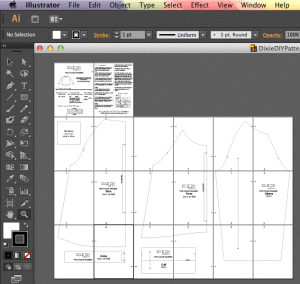
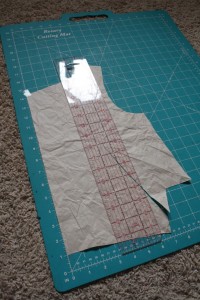
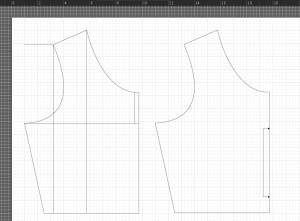
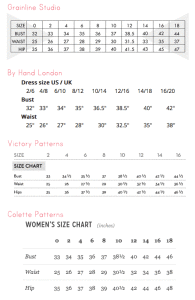
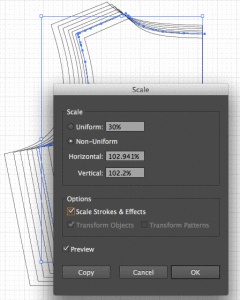
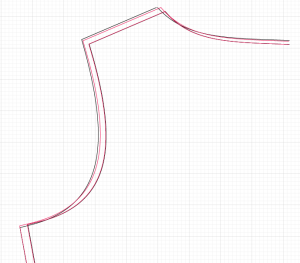
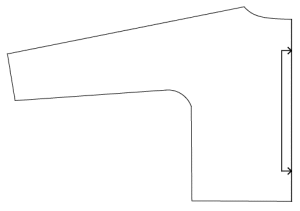
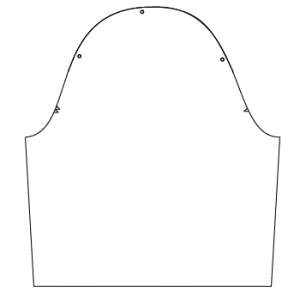
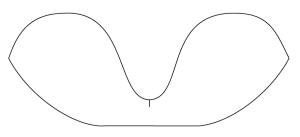
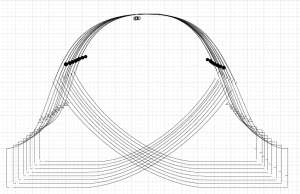

This is amazing information darling. I got a few self draft patterns I wanted to share free. At ,east I go an idea what it takes x
Wow, this is detailed! So interesting to read about your process!
Fascinating! Not because I want to digitize patterns, but simply for all the info on grading. I’ve always been stumped by grading and how it works. The whole proportional issue is veeeerrry interesting. Thanks for this write up!
Thanks for this post! Amazing info, which no one else seems willing to type out, so thanks again!
Thanks for information. This is really interesting and informative!
This is SO helpful. I am actually working on my first pattern right now and so this couldn’t have come at a better time.
This is an excellent post and very inspiring. It would be much better than storing my self-drafted pattern pieces around the house and most probably losing them! Saving this for later 🙂 Thanks so much for sharing!
yes, having a digital file is great. i’m always losing one piece or another around my sewing room. it’s nice to know i can always print out that piece if i need to.
Lady, you are the best. This is so chock full of seriously intriguing info I am squirrelling it away for the spring when I hope to launch something (just very small to start). It is incredibly generous and kind of you to share all this information, which clearly took you a lot of time and trial and error to find out. Sending you digital high fives.
This is very interesting and helpful. Thanks for the time you are putting into it. I want to learn more!
Loads of fascinating info, thank you for taking the time to write it all up to share! Not that I’m a pattern maker, but it’s very interesting to read about grading. Thank you
Amazing! What a great post – and oh god amen to the hell that is grading! Serious salutations to you for taking the time and effort to share all this information.
You and Einstein should hook up 🙂
Very helpful post, Dixie! I have a grading book that helped me write down my grading rules. I’m just geeky enough that I might try and write a macro for it! You’re right in that it gets quicker the more you do it and you start to see what needs to happen.
I’ve been bookmarking your posts so that I could read when I had more time (which I just did). These are really interesting to me esp. because I use illustrator every day at work and seeing how you’re using it for patterns is intriguing. Very cool 🙂
Thank you for share this, it’s very insightful and nice to know that illustrator can be used for this type of thing too!
Thank you so much for sharing! I am in the process of becoming an Indie pattern designer but had yet to figure out how all this digitizing works. Now I know! And I’m excited to start 🙂
It has always stumped me how to get a pattern I drafted into Illustrator (short of ripping it into strips and shoving them into the disc drive). Thanks for this post. It’s a lot of complicated ground to cover.
God, I love you. Thanks for sharing all this super-useful info for free! May karma pay you back in MILLIONS! 🙂